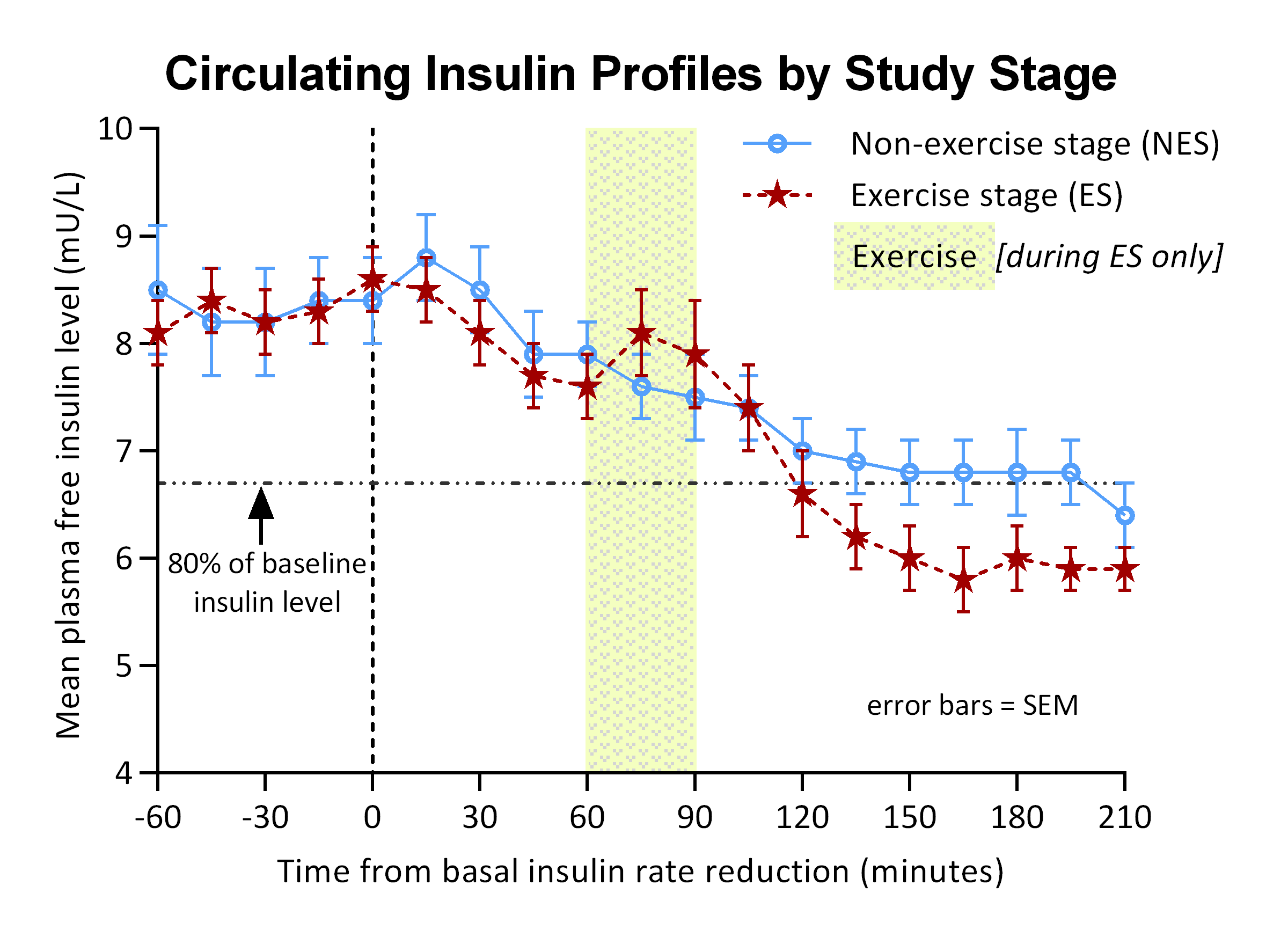Oral Presentation Australian Diabetes Society and the Australian Diabetes Educators Association Annual Scientific Meeting 2014
THE IMPACT OF EXERCISE ON THE FALL IN PLASMA INSULIN FOLLOWING REDUCTION OF BASAL INSULIN PUMP INFUSION RATES IN PEOPLE WITH TYPE 1 DIABETES (#59)
Background: Minimal data guide optimisation of insulin pump therapy (IPT) basal insulin infusion rate (BIIR) reduction prior to exercise. We investigated the effects of exercise on circulating free insulin levels after subcutaneous BIIR reduction.
Method: Two-stage randomised crossover study of 14 adults with type 1 diabetes using standardised IPT (7 females, mean±SD: age 42±10 years, diabetes duration 21±9 years, HbA1c 7.2±0.5%). Exercise (ES) and non-exercise (NES) stages were undertaken in random order, fasting following a single overnight BIIR. In both stages, after 60 minutes rest, BIIR was reduced by 50% for 210 minutes; venous samples were collected at 15 minute intervals. NES participants were observed resting. ES participants exercised for 30 minutes on a stationary bicycle (workload 65‒70% of age-predicted maximal heart rate) commencing 60 minutes post-BIIR reduction. Plasma insulin was measured by radioimmunoassay; plasma was pre-treated with polyethylene glycol to precipitate bound insulin when antibodies were present. Data are presented as mean±SEM.
Results: Following BIIR reduction in NES, free insulin levels reduced from baseline by 4.5±2.7%, 15.9±1.9% and 18.1±3.0% at 1, 2 and 3 hours, respectively (baseline versus 1hr p=0.08; 1hr versus 2hr p<0.001; 2hr versus 3hr p=0.37). Exercise increased free insulin levels by 1.4±0.6mU/L and 0.7±0.3mU/L compared to rest at 15 and 30 minutes, respectively (p=0.03 for both), then levels declined more rapidly in the hour post-exercise compared to NES (−1.9±0.3mU/L versus −0.7±0.2mU/L; p<0.01) [see figure].
Conclusion: At least two hours are required after 50% BIIR reduction to impact free insulin levels significantly. However, even by three hours post-reduction, insulin levels remain above 80% of baseline. The insulin level rise with exercise is consistent with enhanced insulin absorption from the subcutaneous depot due to increased blood flow. The subsequent accelerated fall in insulin levels over the first hour post-exercise could partly relate to depletion of the insulin reservoir following the enhanced absorption. A greater reduction in insulin dosing and/or supplemental carbohydrate may be required to avoid exercise-induced hypoglycaemia.

- We gratefully acknowledge funding by an ADS-Sanofi grant, the Lynne Quayle Charitable Trust, and material support from Medtronic.